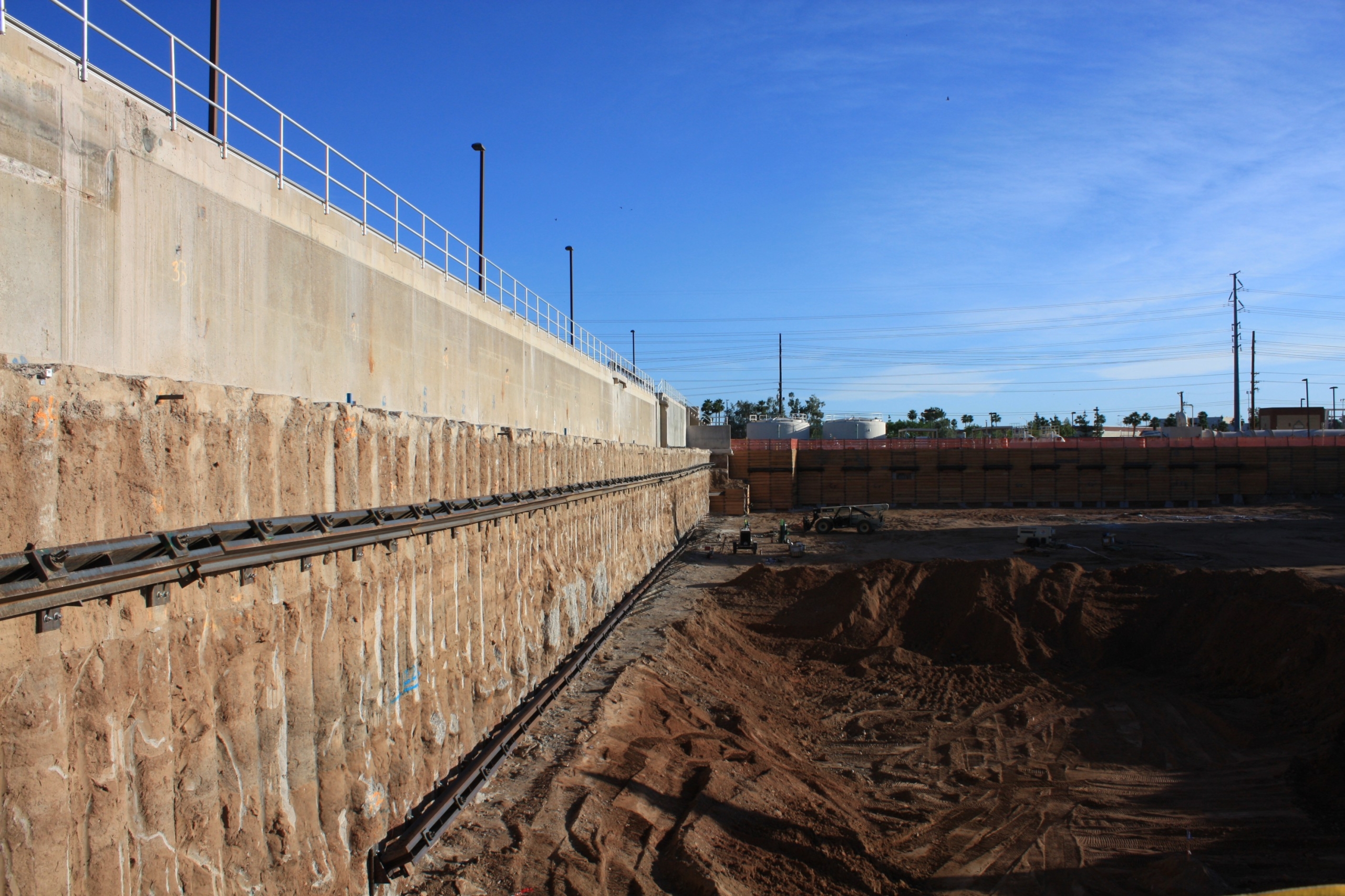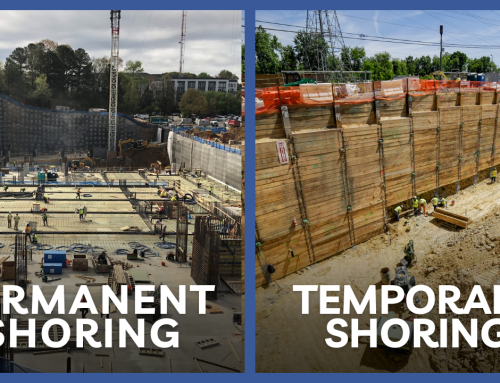Secant pile walls are typically used to support the ground around an excavation and provide a relatively impermeable barrier to groundwater. This article details secant pile wall construction, applications, and advantages.
Defining Secant Pile Walls
Secant pile walls also referred to as secant piles or secant walls, are a construction technique used to provide rigid lateral support to excavations and underground structures. They are constructed by drilling a series of overlapping concrete piles or shafts. The overlapping of the piles provides a continuous barrier to soil and water.
Secant Pile Walls are Usually Constructed in Three Steps:
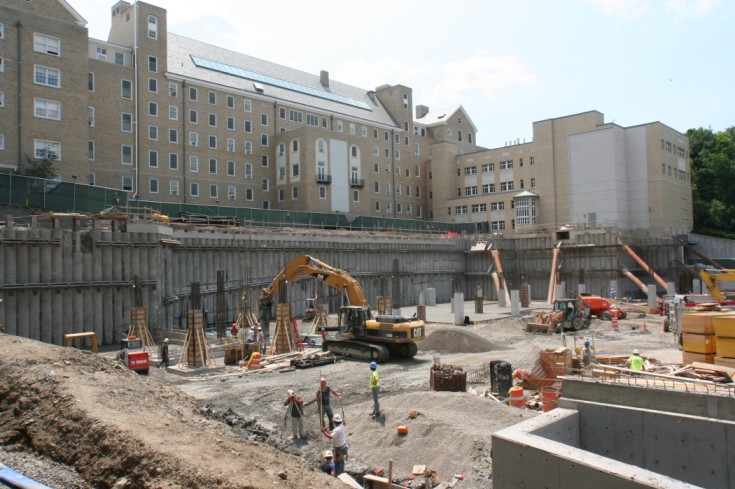
- Step 1 – Construction of Guide Wall: Prior to drilling any piles, a guide wall is constructed at the top of the secant pile wall to ensure that the proper spacing and overlap of the individual secant piles is maintained. The guide wall also helps to maintain the verticality of the piles. A typical guide wall is 3 to 5 feet deep and extends around 1 to 2 feet beyond the diameter of the piles. The guide wall is typically constructed of lightly reinforced concrete and steel forms or Styrofoam blocks are used to create the openings in the guide wall for the secant piles. The guide wall is usually demolished once the secant piles are complete.
- Step 2 – Drilling Primary Piles: After the guide wall is constructed the primary piles are drilled in alternating locations leaving space for a secondary pile between each primary pile. Primary piles are typically made of unreinforced concrete. They may use either structural concrete or low-strength concrete. The reason these piles are unreinforced is to prevent the reinforcement from being damaged when drilling the secondary piles.
- Step 3 – Drilling Secondary Piles: Secondary piles are then installed in between the primary piles. The secondary piles fill in the gaps between the primary piles. In addition, a portion of the primary pile is drilled out when drilling the secondary piles to provide the necessary overlap to inhibit groundwater flow and resist ground pressures. The secondary piles are typically reinforced with a steel wide flange beam or reinforcing steel cage that is designed to take the moments and shear forces imposed by the surrounding ground and water. The reinforcement may also be designed to take vertical loads from structures supported by the secant piles. Secant piles used for tunnel shafts in a self-supporting ring do not require reinforcement.
Applications of Secant Pile Walls
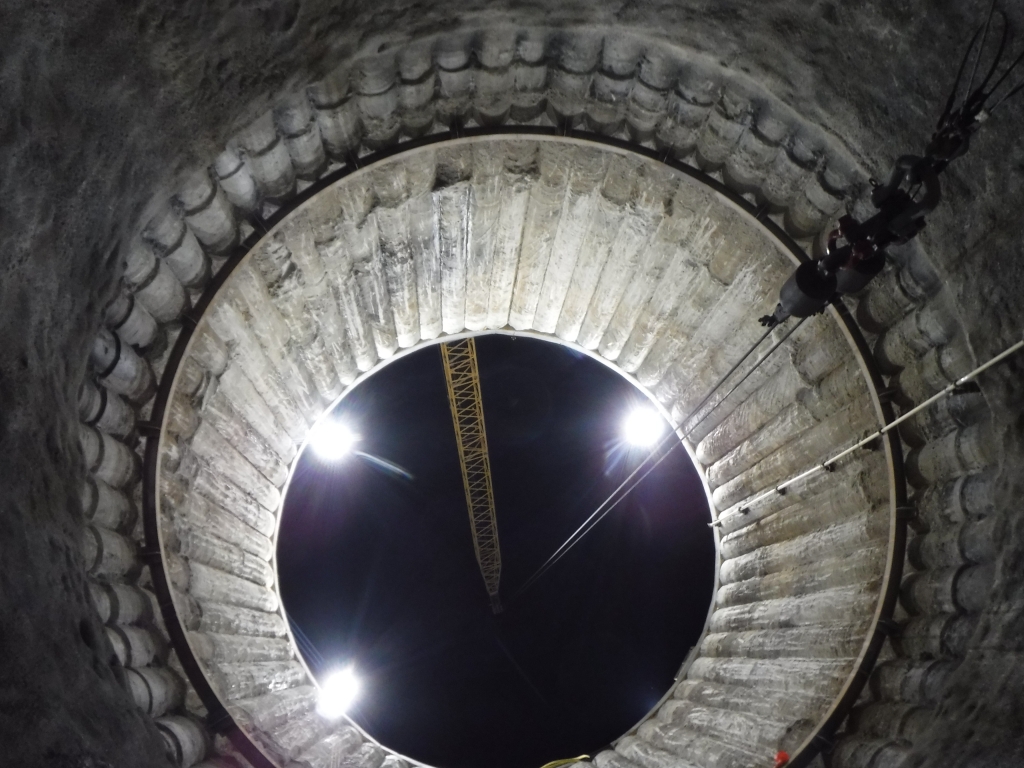
- Earth Retention: One of the primary functions of secant pile walls is earth retention to retain and stabilize the surrounding soil during excavation or construction. When digging deep into the ground, there’s a natural tendency for the earth to collapse inward, posing significant risks to workers and the project’s progress. Secant pile walls act as a protective shield, holding back the soil and preventing potentially hazardous cave-ins. This application is particularly vital in urban environments where construction often occurs in close proximity to existing structures and infrastructure. Secant piles are typically more rigid than other types of earth retention resulting in less lateral movement and reduced impact on surrounding structures and utilities.
- Water Control: Secant pile walls excel in water control applications, such as areas with high water tables or in proximity to bodies of water. The overlapping arrangement of primary and secondary piles creates a continuous barrier that effectively reduces groundwater infiltration. This feature is invaluable in scenarios where keeping water out is critical, such as in underground parking garages, basements, or tunnels. Secant piles can also be used to provide an effective barrier to groundwater flow under and through dams and levees. By creating a barrier against water ingress, secant pile walls contribute to the longevity and structural integrity of underground constructions.
- Stabilization of Slopes and Embankments: Secant pile walls can be used to stabilize slopes and embankments in areas prone to landslides or erosion. By reinforcing the soil and preventing further movement, secant pile walls help maintain the safety of infrastructure, roads, and properties on or near slopes.
- Tunneling Projects: Self-supporting secant pile shafts can be constructed to provide unobstructed access for men and equipment to tunnels. These shafts play a crucial role in creating safe and secure tunnel entrances and ensuring the integrity of underground passageways.
Advantages of Secant Pile Walls
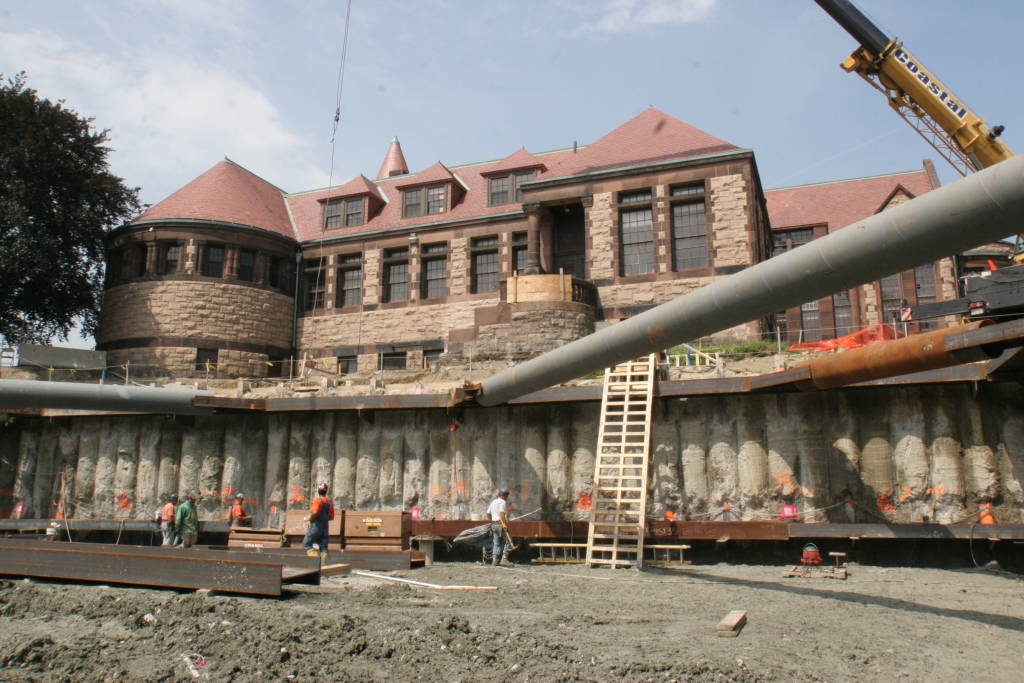
- Versatility: One of the primary advantages of secant pile walls is their versatility. They can be adapted to suit various soil types and ground conditions, making them a reliable choice for a wide variety of construction projects. Whether dealing with soft clay, dense sand, mixed soil or even rock, secant pile walls can be tailored to meet the specific demands of the site. This adaptability ensures that these walls are a practical solution in a variety of scenarios.
- Space Efficiency: Secant pile walls do not require a lot of room to construct, making them ideal for construction projects in urban environments with limited room to maneuver. Unlike some other foundation support methods that require ample space for installation, secant pile walls can be constructed in tight spaces without compromising their structural integrity. This space-saving feature is particularly valuable in densely populated cities where every square foot of land is valuable.
- Enhanced Water-Tightness: The overlapping design of the primary and secondary piles creates an effective barrier against water infiltration. This makes secant pile walls a top choice for projects where inhibiting groundwater seepage is critical, such as excavations that extend below the water table, waterfront developments, or structures near bodies of water.
- Longevity and Durability: Secant pile walls are engineered to be long-lasting and durable. With proper design, construction, and maintenance, these walls can provide structural support for many decades. Their robustness and resilience make them a reliable choice for projects where long-term stability is paramount, such as high-rise buildings and infrastructure developments.
- Compatibility with Deep Foundations: Secant pile walls are compatible with deep foundation systems. They can be integrated with techniques such as pile foundations to provide comprehensive support for tall structures. This compatibility adds to their versatility and suitability for various construction scenarios.
Secant Pile Wall Case Studies
Panbowl Lake (KYTC): The Kentucky Transportation Cabinet (KYTC) hired Schnabel to design and install a permanent secant pile water cutoff wall for the Panbowl Lake Dam which has been dealing with stability and erosion issues due to severe flooding. On this project, Schnabel drilled over 150 secant pile shafts with a diameter of 1,180mm and a drilling depth of over 50 FT. More information about this project can be found here.
Romeo Arm Interceptor: Schnabel was contracted by Oscar Renda Contracting to install a 35-foot diameter secant pile shaft in a utility corridor that contained multiple overhead high-voltage power lines. The overhead lines required that Schnabel drill the secant shaft from a lower elevation. To accomplish this, Schnabel lowered a 200,000-pound drill rig into a 45-foot wide upper shaft constructed by the Contractor. The rig, with a 70-foot-tall mast, then had to be assembled in the limited space of the upper shaft. More information about this project can be found here.
Secant Pile Wall Solutions from Schnabel
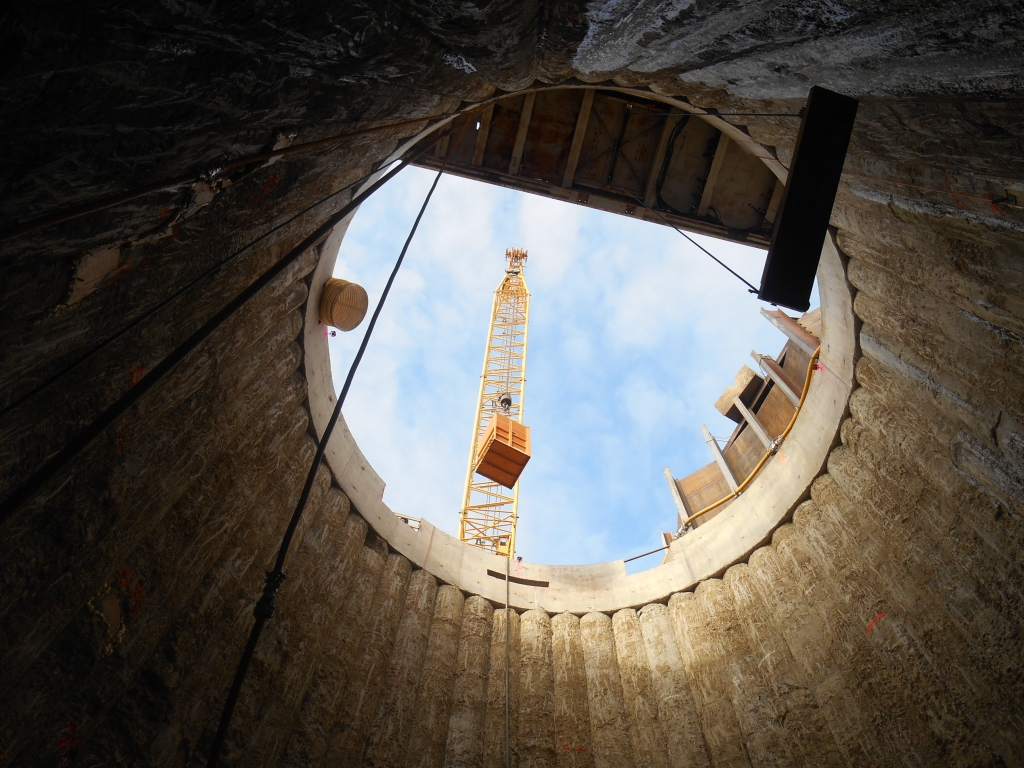
Secant pile walls are just one of the methods that Schnabel provides for geostructural construction. Their adaptability, space efficiency, and other benefits make them a preferred choice for many construction projects. These walls not only provide structural support but also play a crucial role in water control and earth retention.
Frequently Asked Questions (FAQs)
- Are secant pile walls suitable for all soil types? Secant pile walls can be adapted for various soil types, but the design must consider the specific conditions of the site.
- How do secant pile walls compare to other retaining wall methods? Secant pile walls offer unique advantages, including versatility and space efficiency, making them a competitive choice in many scenarios.
- What is the lifespan of a secant pile wall? When properly designed and constructed, secant pile walls can have a long lifespan, often exceeding several decades.
- Do secant pile walls require regular maintenance? Secant pile walls are generally low-maintenance; however, periodic inspections may be necessary to ensure their continued effectiveness.
